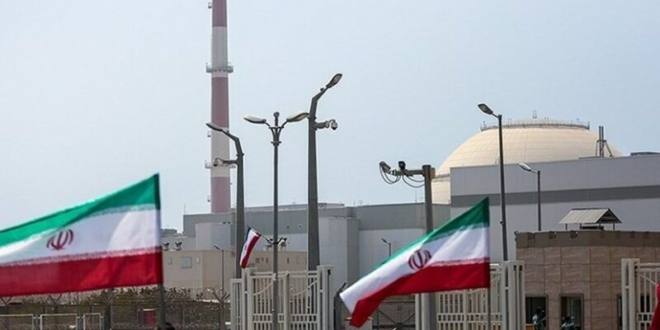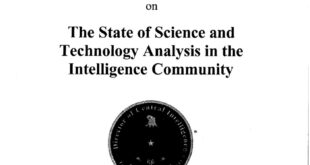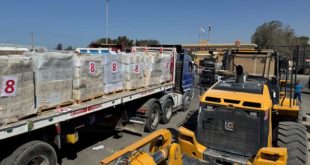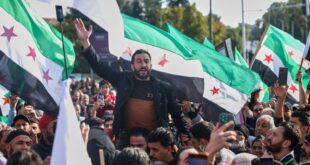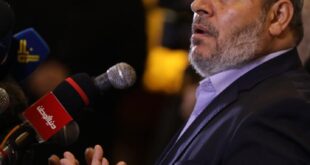At the beginning of last month, United States (US) President Donald Trump sent a letter to Iran’s Supreme leader Ayatollah Khamenei through the United Arab Emirates (UAE) expressing his desire to negotiate a nuclear deal with Iran. This request followed Trump’s Executive Order in early February threatening “maximum pressure” to ensure that “Iran be denied a nuclear weapon and intercontinental ballistic missiles.” The order also tightened all sanctions and other measures against Iran. The Iranians responded formally through Oman suggesting that they did not want direct negotiations, but would be open to indirect talks.
On 30 March 2025, in response to the Iranian rejection, Trump warned that if Iran did not reach a nuclear agreement with the US, it could face military action, specifically bombings, alongside the imposition of secondary tariffs like those enacted during his previous administration. On Monday, Iran delivered a message from Khamenei to the US through the Swiss embassy which represents US interests in Iran, warning that Iran will respond “decisively and immediately” to any US action.
In his first term, in 2018, Trump withdrew the US from the Joint Comprehensive Plan of Action (JCPOA), an international agreement that placed restraints on Iran’s nuclear programme in exchange for a lifting of sanctions on the country. The deal aimed to extend the ‘breakout’ time—the period it would take Iran to develop a nuclear weapon—to about one year. However, following the US withdrawal, the deal came apart and Iran resumed the production and enrichment of uranium beyond the limits prescribed by the JCPOA, sharply reducing the breakout time.
The goals of the current negotiations under Trump are not clear, but they are clearly beyond the mere revival of the JCPOA that was agreed to by the United Kingdom, France, Russia, China, and Germany in 2015 and from which the US had walked out of in 2018.
Background
Iran’s nuclear programme began in the 1950s with US assistance under the Shah’s regime, having signed the Non-Proliferation Treaty (NPT) at the time. However, the trigger for the clandestine programme came after Iran suffered nearly 300,000 casualties in a war launched by Iraq in 1980 which was backed by Saudi Arabia and the United States. After the 1979 Islamic Revolution and subsequent geopolitical tensions, Iran’s nuclear activities raised international suspicion, particularly after an Iranian opposition group revealed undeclared facilities in 2002. This led to mediation efforts by the E3 (France, Germany, and the UK) and heightened scrutiny by the International Atomic Energy Agency (IAEA).
Negotiations between Iran and the E3 began in 2003 and after 12 years, an agreement known as the Joint Comprehensive Plan of Action (JCPOA) was formulated in 2015. For the first time since 1979, direct ministerial-level talks between the US and Iran took place, with American intervention seen as the key to the successful completion of the negotiations. As part of the process, President Obama spoke to his counterpart, President Rouhani by telephone during the latter’s visit to New York in 2013.
Under the 2015 framework, Iran agreed to reduce its enriched uranium stockpile by 98 percent, freeze its enrichment at 3.67 percent, and allow comprehensive IAEA inspections. In exchange, sanctions linked to its nuclear programme would be lifted with a “snapback” provision in the event of Iran violating the terms of the agreement.
From the outset, Israel had opposed the JCPOA. As the only nuclear weapons power in the region, it felt that Iranian nuclear weapons would pose an existential threat to the country. In 2013, while the negotiations were on, Netanyahu addressed the US Congress and said “This is a bad deal—a very bad deal”. Arab allies of the US—Saudi Arabia, UAE and Egypt—also opposed the deal.
The opportunity arose after Trump took office in 2017, and a year later, in May 2018, he ordered a US withdrawal from the deal and a re-imposition of sanctions on Iran, despite the IAEA’s certification that Iran had fully complied with the JCPOA.
The US withdrawal was supported by Israel, Saudi Arabia, and other Arab allies. Israel now worked to make the US policy tighter and persuaded the US to undertake the policy of “maximum pressure” which included the decision to designate Iran’s Revolutionary Guards Corps (IRGC) as a terrorist organisation in 2019. On 3 January, 2020, the US assassinated Major General Qassem Soleimani, the leader of the IRGC and later that year the Israelis killed Iranian nuclear scientist Mohsen Fakhrizadeh. It was only after Soleimani’s killing that Iran announced it would no longer abide by the limits prescribed by the JCPOA.
When the Biden administration took office in 2021, there were expectations that the US would rejoin the JCPOA. But things got complicated when a conservative government under President Ebrahim Raisi came to power after Iran’s June 2021 elections who largely opposed the deal. Negotiations did begin, but after a year they began to come apart in the new global situation shaped by the Russian invasion of Ukraine. Internal strife in Iran further complicated issues, and by December 2022, the deal had collapsed with Iran resuming nuclear activities beyond the limits set by the JCPOA.
Prospect
Since Trump pulled out of the JCPOA, Iran’s nuclear programme has made substantial advances and is closer to making nuclear weapons. Earlier in March, Rafael Mariano Grossi, the Director-General of the IAEA, expressed concern over the increase in Iran’s stockpile of uranium enriched to 60 percent, which had risen to 275 kg, up from 182 kg in the previous quarter. It is well known that if this was enriched to 90 percent, it could be used as a core of at least six nuclear weapons within two weeks.
The DG also said that while Iran claimed it had declared all nuclear material the IAEA had found traces of uranium particles at locations that had not been declared as per the nuclear safeguards agreement. He added that there was a need to resolve some of these discrepancies “to assure that Iran’s nuclear programme is exclusively peaceful”.
All we can gather from American statements and threats is that President Trump wants to place strict limits on Iran’s nuclear enrichment activities and stop Iran from developing nuclear weapons capabilities. He is looking for a deal that goes well beyond the JCPOA of 2015, however, whether he can achieve it through negotiations remains to be seen.
Iran’s first line of defence—the Hezbollah—has been severely degraded, and the pro-Iran Syrian regime of Bashir-al-Assad is history. Iran has been enormously weakened after its aerial war with Israel last year. Yet it retains a sufficient missile and drone arsenal to devastate the urban centres of US allies like UAE, Saudi Arabia, Qatar, and Bahrain and to close the Straits of Hormuz. It is unlikely to meekly accept too many revisions of the earlier deal.
The problem is that while a lot of Iran’s nuclear activities can be reversed—centrifuges dismantled and uranium enrichment blended down or removed from the country—Iran will retain the know-how. It has a robust and largely self-sufficient defence industry and an educated human resource base. There is no guarantee that the US and Israel can identify and destroy all of Iran’s clandestine sites.
The bigger problem is that in contrast to 2015, any negotiations now will be largely an all-American affair with perhaps token European involvement. Countries that made the JCPOA possible—Russia and China—are not as inclined to support Western goals in Iran as they once were. Both currently support a negotiated settlement. However, given the current geopolitical climate where Russia has become a strategic partner of Iran and China is facing US pressure in the Indo-Pacific, they could respond by providing covert assistance to the Iranian programme as China did once to Pakistan.
On the other hand, the E3 which opposed the American pullout in 2018, are not happy with Iran’s intransigence. This October, key provisions of the JCPOA will expire. The Europeans could well trigger the “snapback” process and reinstitute UN sanctions.
In light of this, there is considerable danger that Trump will follow through with his words on Sunday when, in the wake of Iran’s rejection of direct negotiations, he said “If they don’t make a deal, there will be bombing. It will be bombing the likes of which they have never seen before”.
Last week, reports indicated that the US moved four long-range stealth B-2 bombers to the Indian Ocean base of Diego Garcia. Whether these are intended for a potential operation against Iran or for targeting the Houthis in Yemen remains unclear. What is, however, obvious is that the ability to strike against Houthis who are supported by Iran, is also a message to Tehran.
Any larger war in the Middle East will have global repercussions. First, it will never be clear whether a US strike would have neutralised all Iranian facilities. An American attack and the consequent destruction could have the paradoxical effect of pushing Iran to make and use nuclear weapons. Second, oil prices could skyrocket, triggering supply shortages. Lastly, there could be humanitarian consequences arising out of radioactive contamination of a strike on nuclear facilities.
As of now, it appears that Trump is considering Iran’s proposal for indirect talks, even as he has boosted US forces in the region in preparation for possible military strikes. The White House officials say that the American buildup does not necessarily suggest imminent military action, but an American desire to negotiate from a position of strength. As for the Iranians, they are ready for all eventualities, since their choices remain limited.
 Eurasia Press & News
Eurasia Press & News
